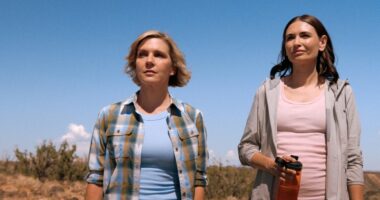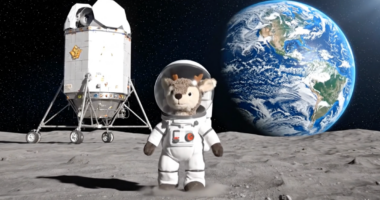Share this @internewscast.com
Though it wasn’t the pioneer in featuring swift-moving ghouls, there’s no denying the significant impact 28 Days Later had on the genre of modern zombie films. The movie was a captivating yet unsettling spectacle, with its action sequences possessing a distinct rawness, partly due to director Danny Boyle’s clever use of a digital video camera. Additionally, writer Alex Garland instilled a powerful sense of despair in the script, giving 28 Days Later a more authentic feel compared to the zombie films that came before it.
After Boyle and Garland took a step back from the franchise, it continued through a graphic novel and Juan Carlos Fresnadillo’s direction in 2007’s 28 Weeks Later. Now, they have reunited for 28 Years Later. Although set in the same universe and referencing the original, the new film leaves a different impression due to the current, even more saturated landscape of zombie-themed horror in pop culture. Boyle and Garland strive not to replicate other major zombie narratives as they craft a new story reflecting the world’s transformation nearly three decades after a catastrophic virus outbreak. In some of the film’s critical scenes, they successfully steer clear of appearing too unoriginal.
However, many of the smaller narrative elements feel excessively familiar—almost deliberately so. This wouldn’t be a significant issue for 28 Years Later if it could generate the same adrenaline-pumping fear that rendered the first movie an immediate classic. Yet, what’s most chilling about the latest installment in the franchise is how its narrative unexpectedly veers towards conservatism and, at times, nationalism.
Though 28 Years Later opens with an arresting reminder of how people had no idea how to defend themselves against those infected with the rage virus in the outbreak’s early days, it revolves around a community that has learned what it takes to survive. Like everyone else holed up on a tiny island in northern England, Jamie (Aaron Taylor-Johnson) knows how dangerous the infected are and how easily their virus is spread. He also understands that, were it not for the island’s unique geography — it connects to the mainland with a causeway that vanishes with the tides — his life of relative comfort wouldn’t be possible.
Jamie and his sickly wife Isla (Jodie Comer) work hard to impress upon their son Spike (Alfie Williams) how important it is to adhere to their community’s rules. People can leave the island to collect wood or hunt for whatever food they can find. But they do so knowing that no one will come to save them if they can’t make it back to the island on their own.
Everyone also knows that, while Great Britain is still quarantined, the rage virus has been all but eradicated everywhere else in the world. And because other countries have essentially left the British to fend for themselves, there’s a current of resentment (particularly toward the French) coursing through Jamie’s community.
One of the first things that jumps out about 28 Years Later is its overwhelmingly white cast. Some of that can be attributed to the idea that these are all people who just happened to already live on the island when the virus first got out. But Boyle also makes a point of emphasizing how capital B British all of the film’s characters are, with closeups of photos of Queen Elizabeth II and moments where people remind each other that it’s time for tea. The film frequently cuts to archival black-and-white footage of British soldiers marching during World War I and scenes from Laurence Olivier’s Henry V in a way that makes British identity feel like it’s meant to be understood as a crucial part of the story. This is also true of the way 28 Years Later prominently features a recording of “Boots,” Rudyard Kipling’s famous poem about a British soldier’s participation in the Second Boer War. But all of that imagery becomes charged with a very pointed, Brexit-y energy when 28 Years Later juxtaposes it with shots of the writhing, naked infected who have become the mainland’s dominant population.
The racial homogeneity of Jamie’s community is that last thing on anyone’s mind as he prepares Spike to go on his first trip to the mainland — an experience that’s supposed to help them bond and show the boy what it’s like to kill an infected. Isla’s terrified at the idea of her son leaving, but it excites Jamie, who almost seems to enjoy his forays into danger. Spike, too, is thrilled to finally get a chance to see parts of the world that he’s never had access to. But it’s not long before they encounter the infected and are forced to spend the night hiding rather than returning home.

Columbia Pictures
Especially once Jamie and Spike have ventured out, 28 Years Later starts to feel a lot like The Last of Us in the sense that its story is — at least initially — about a man working through his feelings about fatherhood in a world plagued by flesh-eating monsters. And the film’s focus on manhood (as well as its parallels to other, more recent zombie fiction) becomes that much more pronounced when Jamie and Spike first encounter an alpha, one of the new types of infected.
The way 28 Years Later evolves its monsters is one of the more interesting aspects of the film. There are still jerky, sprinting infected who present the most immediate risk, but after decades of mutation, the virus has also given rise to corpulent “slow-lows” who crawl on the ground, and infected who seem able to form social connections. Boyle showcases the film’s new types of monsters brilliantly in a number of action sequences that make heavy use of a unique iPhone camera array that creates shots that pivot around scenes in a very Matrix-y, bullet time fashion. Those shots — of arrows being shot into infecteds’ necks and groins — are exhilarating and impactful, but deployed so frequently that it quickly grows tiresome.
What’s even more exhausting is how, despite the fact that we’re told how these survivors have adapted to life with the infected, the film’s characters repeatedly make decisions that feel wholly unmoored from reason. This becomes very apparent in the movie’s second half as Comer — who delivers a tremendous, if restrained performance — takes on a much more prominent role.

Columbia Pictures
That said, 28 Years Later is absolutely gorgeous more often than not. Boyle’s shots of the English countryside are majestic, but they become alarming as the infected shamble into view. There’s one chase scene on the causeway that stands out for having some of the most beautiful visuals ever featured in a zombie film. But the story’s rote-ness keeps 28 Years Later from feeling like the product of Boyle and Garland working at the height of their powers.
As questionable as some of its messaging is, 28 Years Later is just the first installment of a new trilogy. It’s possible that its off-putting qualities are being propped up for the subsequent two films to knock down — which means that, like the infected, the series will have to evolve.
28 Years Later also stars Ralph Fiennes, Edvin Ryding, Chi Lewis-Parry, Christopher Fulford, Stella Gonet, Jack O’Connell, Erin Kellyman, and Emma Laird. The movie is in theaters now.






